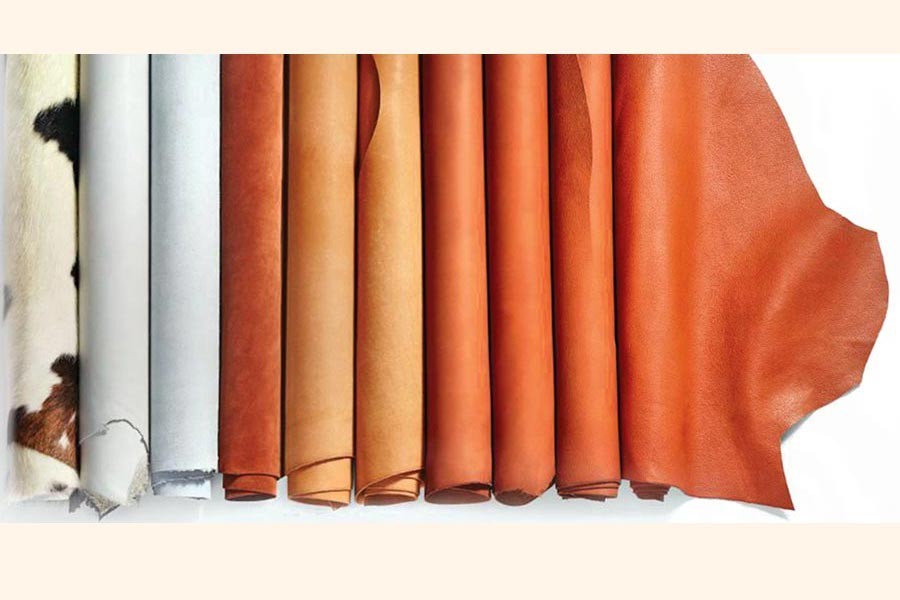Exports of leather and leather items have maintained a downtrend this fiscal as local manufacturers continue to bear the brunt of environmental non-compliance.
Bangladesh exported leather and leather goods worth of US$ 626.54 million during the first seven months of the current fiscal, according to the latest statistics of the state-run Export Promotion Bureau.
This figure is more than 11 per cent lower than what the country shipped during the same period last year.
The figure is also 3.0 per cent lower than the strategic export target the country set for leather and leather goods for the fiscal year, 2019.
This decline in leather and leather goods export is not something out of the blue. During the last fiscal, the country's export earnings from leather suffered a drastic falloff of over 12 per cent from the fiscal 2016-17.
Asked why overseas sales kept slumping, sector insiders said that the industry has not yet picked up steam since the relocation of tanneries to Savar.
"Although all 155 tanneries have moved, around 115 of them have become operational," said Md. Shakawat Ullah, general secretary of the Bangladesh Tanners Association.
Insiders noted until and unless the Central Effluent Treatment Plant (CETP) of the Savar Leather Park becomes fully operational, it would be very difficult for the local tanneries to become compliant with regard to environment.
"There are still work to be done in terms of solid waste management while some more rectification and modifications need to be performed on this treatment plant," said Md. Saiful Islam, President of the Leathergoods and Footwear Manufacturers & Exporters Association of Bangladesh.
Leather and leather goods are Bangladesh's second biggest export item, after the readymade garment.
Environmental compliance has become a major concern for this industry as the tanneries at Hazaribagh have long been a major source of pollution of the Buriganga River.
It has been estimated over 40 per cent pollution of Buriganga over the years has been caused by the tanneries.
In this context, the Supreme Court had earlier ordered relocation of the tanneries from Hazaribag to the Savar industrial park.
The ministry of industries allocated plots to 155 tannery owners through the Bangladesh Small and Cottage Industries Corporation (BSCIC) in the Leather Industrial Park established on 200 acres of land at Savar.
As per the agreement, the government is also setting up a central effluent treatment plant in the leather park to ensure that wastes discharged by the tanneries are treated before flowing into the nearby rivers.
"Once this CETP becomes fully operational, it would be easier for us to get environmental compliance certificate from the international bodies," said Shakawat Ullah, General Secretary of the Tanners Association.
Industry leaders said they are planning to form a separate company for the future operation and maintenance of this treatment plant.
"A Chinese company is currently responsible for the set up and maintenance of this treatment plant. But the contract of that company will come to an end by the middle of this year," said Md. Saheen Ahamed, President of the tanners' grouping.
"We are planning to form a company to look after the treatment plant in the near future," Mr Ahamed said,
The tanners' association, the LFMEAB and the ministry of industries will work together to form this company, he added.
Apart from environmental compliance issues, industry leaders argued the recent increase in the popularity of cheaper synthetic materials like rexine has also dampened the demand for leather goods.
"The use of synthetic materials is becoming prevalent in various value added leather products like briefcase or leather bags," said Mr Islam of the LFMEAB.
"The popularity of such synthetic materials has been on the rise, particularly in Germany and many of our EU markets in recent times," he added.
His views were further supported by the fact that while the overall exports of leather and leather goods are on a downward curve, the shipment of footwear has witnessed a modest 7.0 per cent growth during this fiscal.
Meanwhile, the major decline in this particular export segment has come from other leather items, which have slid by 42.62 per cent compared to the same period last year.
"We predict that this surge in the demand for synthetics is temporary," Mr. Islam said.
"We are expecting a rebound in leather goods export by the next fiscal given the CETP in Savar becomes fully operational within three or four months," he added.


